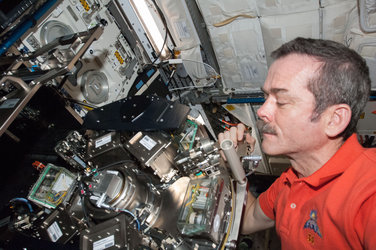Accept all cookies Accept only essential cookies See our Cookie Notice

About ESA
The European Space Agency (ESA) is Europe’s gateway to space. Its mission is to shape the development of Europe’s space capability and ensure that investment in space continues to deliver benefits to the citizens of Europe and the world.
Highlights
ESA - United space in Europe
This is ESA ESA facts Member States & Cooperating States Funding Director General Top management For Member State Delegations European vision European Space Policy ESA & EU Space Councils Responsibility & Sustainability Annual Report Calendar of meetings Corporate newsEstablishments & sites
ESA Headquarters ESA ESTEC ESA ESOC ESA ESRIN ESA EAC ESA ESAC Europe's Spaceport ESA ESEC ESA ECSAT Brussels Office Washington OfficeWorking with ESA
Business with ESA ESA Commercialisation Gateway Law at ESA Careers Cyber resilience at ESA IT at ESA Newsroom Partnerships Merchandising Licence Education Open Space Innovation Platform Integrity and Reporting Administrative Tribunal Health and SafetyMore about ESA
History ESA Historical Archives Exhibitions Publications Art & Culture ESA Merchandise Kids Diversity ESA Brand Centre ESA ChampionsLatest
Space in Member States
Find out more about space activities in our 23 Member States, and understand how ESA works together with their national agencies, institutions and organisations.
Science & Exploration
Exploring our Solar System and unlocking the secrets of the Universe
Go to topicAstronauts
Missions
Juice Euclid Webb Solar Orbiter BepiColombo Gaia ExoMars Cheops Exoplanet missions More missionsActivities
International Space Station Orion service module Gateway Concordia Caves & Pangaea BenefitsLatest
Space Safety
Protecting life and infrastructure on Earth and in orbit
Go to topicAsteroids
Asteroids and Planetary Defence Asteroid danger explained Flyeye telescope: asteroid detection Hera mission: asteroid deflection Near-Earth Object Coordination CentreSpace junk
About space debris Space debris by the numbers Space Environment Report In space refuelling, refurbishing and removingSafety from space
Clean Space ecodesign Zero Debris Technologies Space for Earth Supporting Sustainable DevelopmentLatest
Applications
Using space to benefit citizens and meet future challenges on Earth
Go to topicObserving the Earth
Observing the Earth Future EO Copernicus Meteorology Space for our climate Satellite missionsCommercialisation
ESA Commercialisation Gateway Open Space Innovation Platform Business Incubation ESA Space SolutionsLatest
Enabling & Support
Making space accessible and developing the technologies for the future
Go to topicBuilding missions
Space Engineering and Technology Test centre Laboratories Concurrent Design Facility Preparing for the future Shaping the Future Discovery and Preparation Advanced Concepts TeamSpace transportation
Space Transportation Ariane Vega Space Rider Future space transportation Boost! Europe's Spaceport Launches from Europe's Spaceport from 2012Latest

Space snapshot
Thank you for liking
You have already liked this page, you can only like it once!
Does this image make you anxious or are you already tracking where all the wires go? If the latter, you might have what it takes to be an astronaut!
It is an exciting time for space. With NASA’s latest rover safely on Mars and ESA’s call for the next class of astronauts, the space industry is teeming with possibilities.
This image taken in ESA’s Columbus laboratory on the International Space Station is a snapshot of the many opportunities in space research and exploration.
In the centre is the Biolab facility, a fridge-sized unit that hosts biological experiments on micro-organisms, cells, tissue cultures, small plants and small invertebrates. Performing life science experiments in space identifies the role that weightlessness plays at all levels of an organism, from the effects on a single cell up to a complex organism – including humans.
The facility has enabled researchers to make some remarkable discoveries, most notable that mammalian immune cells required a mere 42 seconds to adapt to weightlessness, prompting more questions but also an overall positive outlook for long-duration human spaceflight.
The pink glow in the image is from the greenhouse that has enabled many studies on plant growth in space.
With plans to visit the Moon and Mars, future astronauts will need a regular, fresh source of food as they take on these missions farther away from home. In addition to providing much-needed vitamins and minerals, growing plants in space contributes to sustainability and adds a homey touch to exploration.
Growing plants in the microgravity conditions of the International Space Station has allowed researchers to fine tune the approach. European research showed plants respond best to red and blue light, giving the Columbus module a disco feel.
If you look closely, you can spot Astro Pi Ed to the left of Biolab. As part of ESA astronaut Tim Peake’s Principia mission (2015–2016) to the International Space Station, two space-hardened Raspberry Pi computers, called Astro Pis and nicknamed Ed and Izzy, equipped with environmental sensors, were sent to the Space Station. They are regularly used to run students’ and young people’s programmes as part of the Astro Pi Challenge.
Of course, a whole host of researchers, ground control crew, and mission support specialists make space research and exploration possible. The excitement of space continues.
If you think you have what it takes, apply to be part of the team.
-
CREDIT
ESA/NASA -
LICENCE
ESA Standard Licence

Alexander Gerst with Biolab

Space greenhouse

Alexander Gerst with Biolab

Biolab maintenance















 Germany
Germany
 Austria
Austria
 Belgium
Belgium
 Denmark
Denmark
 Spain
Spain
 Estonia
Estonia
 Finland
Finland
 France
France
 Greece
Greece
 Hungary
Hungary
 Ireland
Ireland
 Italy
Italy
 Luxembourg
Luxembourg
 Norway
Norway
 The Netherlands
The Netherlands
 Poland
Poland
 Portugal
Portugal
 Czechia
Czechia
 Romania
Romania
 United Kingdom
United Kingdom
 Slovenia
Slovenia
 Sweden
Sweden
 Switzerland
Switzerland

























